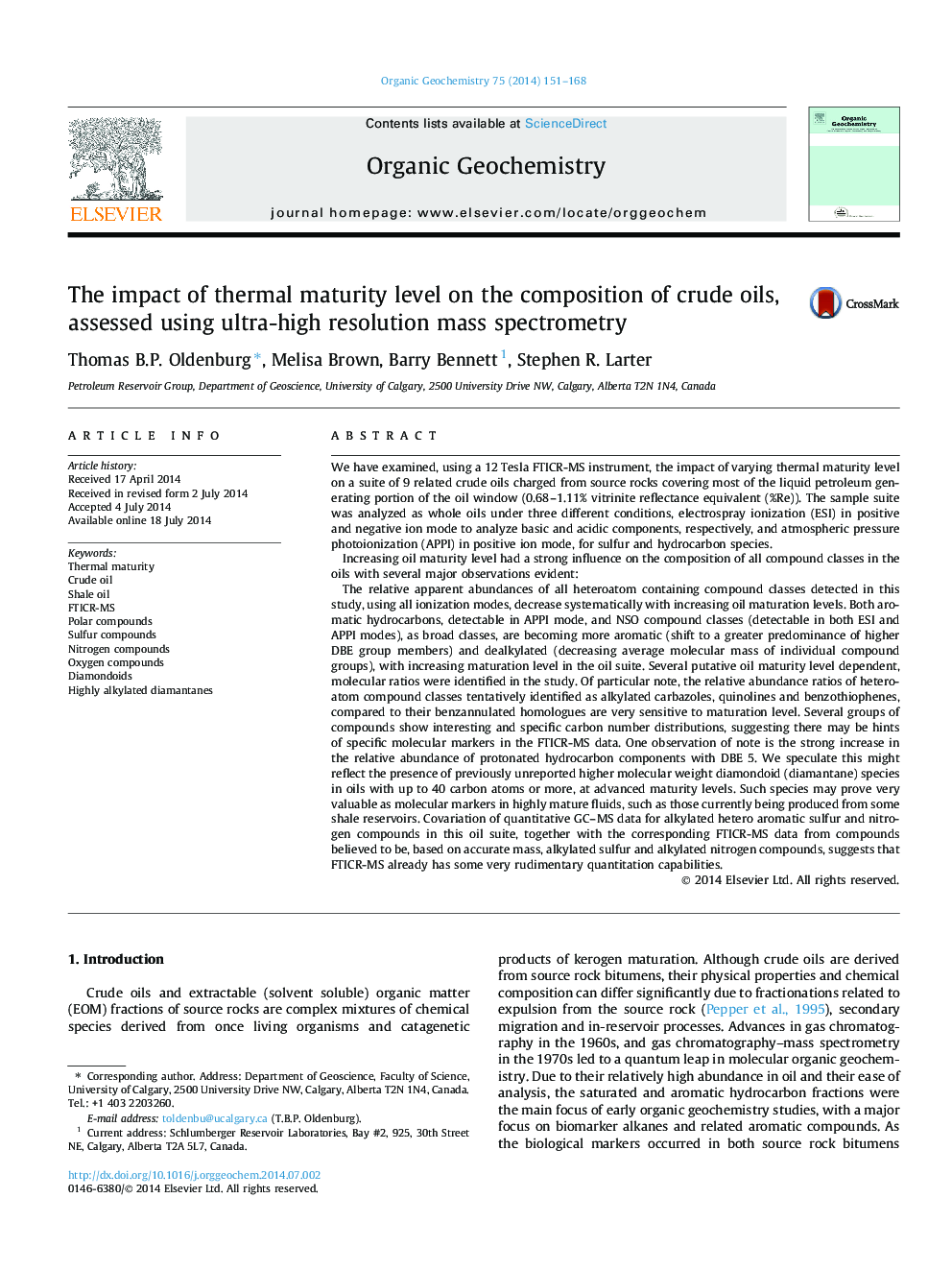| Article ID | Journal | Published Year | Pages | File Type |
|---|---|---|---|---|
| 5161905 | Organic Geochemistry | 2014 | 18 Pages |
Abstract
The relative apparent abundances of all heteroatom containing compound classes detected in this study, using all ionization modes, decrease systematically with increasing oil maturation levels. Both aromatic hydrocarbons, detectable in APPI mode, and NSO compound classes (detectable in both ESI and APPI modes), as broad classes, are becoming more aromatic (shift to a greater predominance of higher DBE group members) and dealkylated (decreasing average molecular mass of individual compound groups), with increasing maturation level in the oil suite. Several putative oil maturity level dependent, molecular ratios were identified in the study. Of particular note, the relative abundance ratios of heteroatom compound classes tentatively identified as alkylated carbazoles, quinolines and benzothiophenes, compared to their benzannulated homologues are very sensitive to maturation level. Several groups of compounds show interesting and specific carbon number distributions, suggesting there may be hints of specific molecular markers in the FTICR-MS data. One observation of note is the strong increase in the relative abundance of protonated hydrocarbon components with DBE 5. We speculate this might reflect the presence of previously unreported higher molecular weight diamondoid (diamantane) species in oils with up to 40 carbon atoms or more, at advanced maturity levels. Such species may prove very valuable as molecular markers in highly mature fluids, such as those currently being produced from some shale reservoirs. Covariation of quantitative GC-MS data for alkylated hetero aromatic sulfur and nitrogen compounds in this oil suite, together with the corresponding FTICR-MS data from compounds believed to be, based on accurate mass, alkylated sulfur and alkylated nitrogen compounds, suggests that FTICR-MS already has some very rudimentary quantitation capabilities.
Keywords
Related Topics
Physical Sciences and Engineering
Chemistry
Organic Chemistry
Authors
Thomas B.P. Oldenburg, Melisa Brown, Barry Bennett, Stephen R. Larter,
